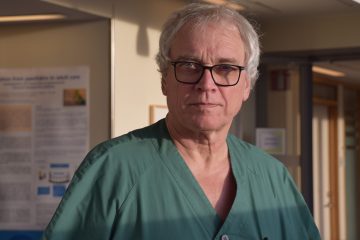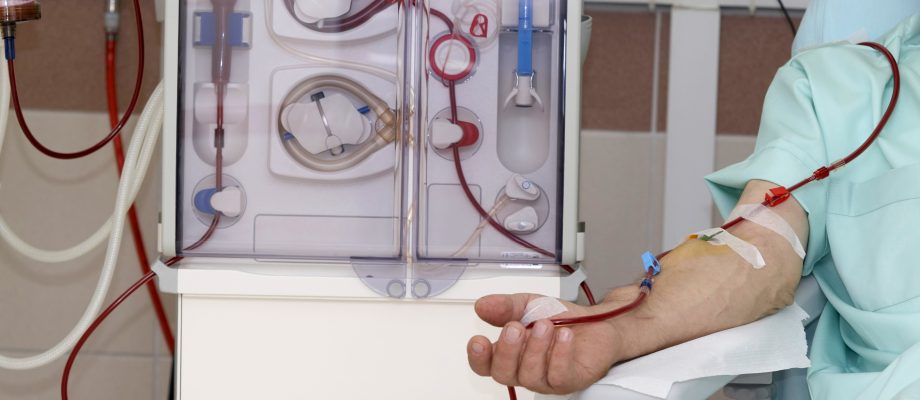GRANTS. In Sweden and worldwide, there is a great shortage of kidneys for transplantation. This costs lives, quality of life and a lot of money. Professor Michael Olausson’s research could change that. A study testing his method on humans for the first time will start soon. If all goes according to plan, the waiting lists for transplants could be eliminated. SEK 3 million from the IngaBritt and Arne Lundberg Research Foundation is making the upcoming study possible.

Michael Olausson, a professor of transplant surgery at the Institute of Clinical Sciences at Sahlgrenska Academy, University of Gothenburg, has been performing clinical transplants for 35 years. He is confident about the outcome of the study, which will mean that the method he has developed over seven years will now be tested in humans.
“This is going to turn out well. Our previous research has taught us how to treat and assess kidneys so that they are transplantable and function well,” he says.
From 200 to 6,000 possible kidney donors

In Sweden about 92,000 people die each year. Only 200 become organ donors, and all of them have died in a hospital. Michael Olausson’s research aims to ensure that the kidneys of at least 6,000 people who die of cardiac arrest outside a hospital each year can also be used for transplantation. This is not possible now, mainly because of the time lag between the death of the potential donor and the time the kidney can be surgically implanted into a recipient. The lack of oxygen after cardiac arrest means that the organ deteriorates too much to be transplanted. Doctors have 30 to 60 minutes to remove the kidney from the deceased person, prepare it, and carry out the transplant.
Michael Olausson’s method means that kidneys damaged by oxygen deprivation can be restored to the condition they were in before the oxygen deprivation occurred through a reconditioning process. At the same time, the entire transplantation process is simplified.
“The method allows plenty of time between cardiac arrest and transplantation. The deceased’s kidney does not have to be removed immediately. In addition, the method eliminates the need for heart-lung machines and other large resources necessary for transplants today. Transplants will be cheaper and easier and can be carried out in more places, not only in the biggest hospitals.”
Costly dialysis
In Sweden, 4,000 people with kidney disease depend on dialysis, and 1,100 new patients start dialysis treatment every year. Of the 600 transplants performed annually in Sweden, 400 are from deceased people and 200 are from living organ donors. Nineteen per cent of dialysis patients die each year. Among transplant recipients, the corresponding figure is two per cent.
“There are reams of literature describing how much better patients feel after transplantation compared to dialysis. With our method, the number of patients depending on dialysis can be reduced instead of continually increasing. This would not only save lives and improve the health of many people but also save money for society. Dialysis is very costly and 10 times more expensive per month of survival than a successful transplant.”
The limited supply of organs leads to a difficult process of prioritizing. Today only the healthiest patients, those who have the best chance of living a long and healthy life, receive a kidney transplant. With more kidneys available, many of those who currently do not even have a place on the waiting list could receive a transplant and significantly improve their quality of life.
“There are studies, including some from Norway, indicating that even transplant patients over the age of 75 do very well. And considering that 50 per cent of people born today are expected to live to 100, the need and demand for transplants will only increase.”
Short time until use
The forthcoming study will be carried out in 2022. The SEK 3 million grant from the Lundberg Research Foundation will be used to purchase two perfusion machines, which are used to treat and restore the removed kidneys to a healthy state.
“Medical technology is constantly evolving and so are the demands we place on it. The perfusion machines are a prerequisite for carrying out the study,” says Michael Olausson.
In the first phase of the study, which focuses entirely on safety, the researchers will transplant four kidneys. They will be the first ones to be implanted in humans using the new method. This phase aims to ensure that after reconditioning, the kidneys function as expected, that is to say, very well. If this is the case, 24 transplants will be performed using the new method and 24 transplants using the current method. Patients will be monitored, and researchers can compare the results for the two groups.
“We will monitor the patients for three months, but after a week we will know if they have done well. At that point, the kidney produces urine and the patient urinates,” explains Olausson, who believes that the method ought to be of use in the medical care system relatively soon after the researchers publish the results of their studies.
“Some new technologies need to be developed, but the incentives to begin work are strong because we have so much to gain. With good will and ingenuity, it could be on track in two to three years.”
BY: LUNDBERG RESEARCH FOUNDATION











